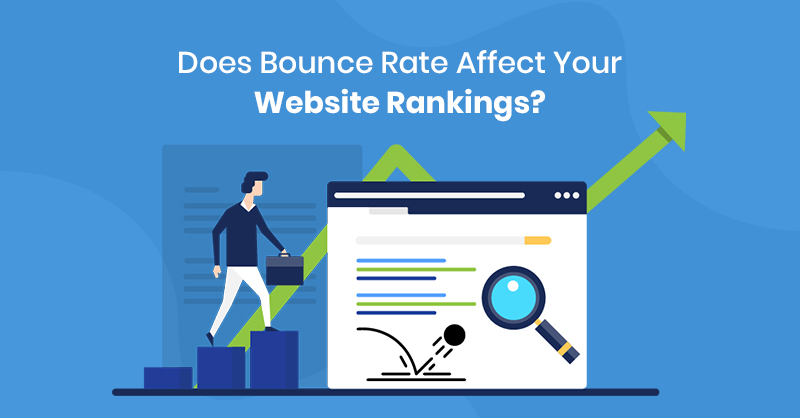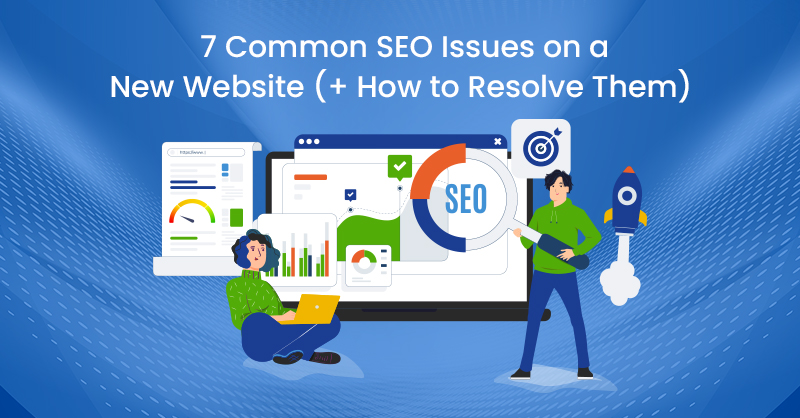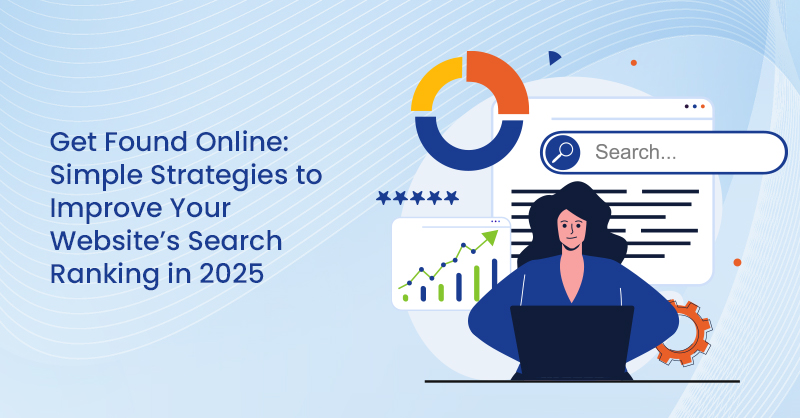Do you think that your bounce rate has an impact on your search engine ranking?
The answer is, yes - it does!
If your bounce rate is too high, it adversely affects your website ranking. Read our blog to understand how bounce rates affect your website rankings.
What Is A Bounce Rate?
Assume there are two users, user A, and user B. User A visits your website and abandons your site immediately because your website seems to be irrelevant to them. User B, on the other hand, visits your website and moves to the next page. So we have two types of users here: one who bounced and another that stayed. Hence the bounce rate here is 50%.
Why Do People Bounce From Your Website?
Page loading time
In today's fast-paced world, no one has time to spare. Most people will leave the website if the page does not load within 4 seconds. People who quit your page because of slow loading times have no idea who you are or what services you provide, which leads to the possibility of losing prospective customers. Hence it is pivotal to improve the loading time of your page.
Oversized images, messy website coding, cheap hosting, too many plugins, and other factors can lead to slow website loading. To enhance your loading time, perform page speed insights tests and apply google’s suggestions.
https://www.shutterstock.com/image-vector/website-loading-optimization-page-speed-seo-2044562525
Poor quality content
People visit websites to get answers to their specific queries. If the information on our website does not address the needs of the visitors, they will leave your website. Hence your content should be relevant, updated and also it should be engaging. Keep in mind that your bounce rate will be high and the conversion will be low if your website has a lot of erroneous, irrelevant, and cluttered content.
Misleading Title Tags
It's always a good idea to come up with a compelling meta title and description because it's your first opportunity to reach out to your potential audience. On the other hand, people frequently use misleading title tags instead of compelling ones. Misleading title tags promise users something but they will be directed to a site that is irrelevant to them and as a result, they immediately leave the website. Hence the title and description of your meta tags should be always related to your content.
Website Is Not Optimized for Mobile Devices
Due to the digital revolution, mobile phones are outpacing desktop computers. As a result, having mobile responsive designs for websites is quite essential. Visiting a website that isn't mobile-friendly is extremely frustrating. Readers abandon the sites where touch functionality, such as swipe, touch, and tap, not working properly or text is too small to read. To verify whether your site is mobile-friendly, you can use Google's mobile-friendly test.
Poor Website Design
The first thing that draws a visitor's attention to a website is its design. People are less likely to abandon our website if the colour scheme, layout, and font are enticing. We must ensure that the typeface and colours we choose are compatible with our brand as well as appealing. Also, note that it's worthless to have an aesthetic font if it’s not readable.
Hence there's nothing wrong with employing a top-notch website designer because a well-designed website can draw in more visitors.
Missing of a Call to Action
The lack of or poorly designed CTA on your website could be the sole cause of a high bounce rate. If there is no call to action on your website, visitors will be puzzled about what to do next. Never forget to add a CTA to your landing page.
The call to action can vary depending upon the type of your website and service. For example, use the CTA "Learn more" if you want readers to read more about your product or service. The CTA "Shop now / Buy now" is used on e-commerce sites. If you want people to sign up for your newsletter or email, you can use "Subscribe now" as a call to action.
What can be done to reduce the high bounce rate?
There is no one-size-fits-all strategy for minimizing the bounce rate because each website has its own set of objectives and target audience. However, we'll go over some common strategies for lowering bounce rates:
-
Identify the pages with high bounce rates and traffic
We should determine the bounce rate of each page to get an idea of the overall bounce rate of your website. First of all, we have to identify the top landing pages and their bounce rates, for this various web analytics tools are available. By simply navigating through the webpage with a high bounce rate, you can identify flaws associated with its design, layout, and content.
Our primary focus should be to address the issues of those pages with high traffic and the worst bounce rates.
-
Employ Heatmaps
Heatmap is a visualisation tool that helps us to determine the user behaviour pattern. It indicates where users are scrolling, clicking, and what is preventing them from engaging, among other things. By analyzing heatmaps you can incorporate the call to action buttons in the locations where the most engagement occurs. Similarly, if people aren't clicking on a particular page element, it can be identified using heatmap and create a fresh design for it. Different kinds of heat maps are used to assess various elements of your website. A click map, for example, shows which components on your website are the most frequently clicked, whereas a scroll map indicates how much farther users scroll down on a particular page.
-
Conduct A/B test
Now with the heat maps, we have a better understanding of what we need to change on our website. If you believe that a lack of CTA on a specific page is the reason why people abandon it, make a copy of that page and add a call to action button to the cloned version. Now by displaying the same page with and without CTA to the people, you can discover the page which is most preferred by them. A/b testing is a great way to find the best versions of your website and boost your conversions. Implement testing with various website designs, templates, styles, and calls to action to achieve the best results.
https://www.shutterstock.com/image-vector/isometric-flat-vector-concept-ab-testing-1246663486
Closing Thoughts
The bounce rate is an important metric that should be regarded along with the others. Lower bounce rates indicate Google that your content is engaging, relevant, and beneficial.
If you have a website with a high bounce rate, the strategies listed above will help you lower it.
Are you looking for help optimizing your website? Get in touch with us!




